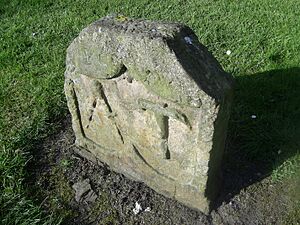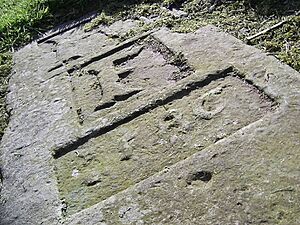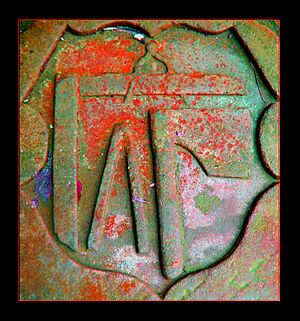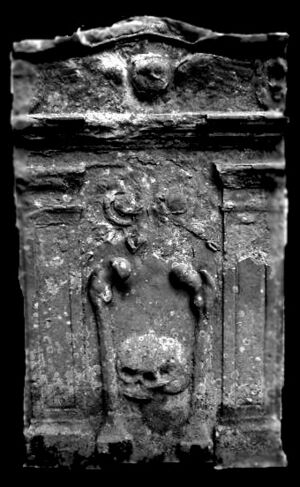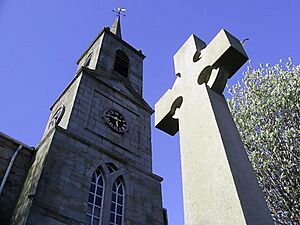Scottish gravestones facts for kids
Have you ever visited an old graveyard in Scotland? You might have noticed that the gravestones there look quite special. These unique stones are called Scottish or Lowland Scottish gravestones. Studying them helps us understand old British burial markers. The designs and symbols on Scottish stones were most detailed in the 1700s.
Contents
Ancient Burial Sites
The very first burial places in Scotland are now gone. But we have found many older tombs and mounds. These include Mesolithic and Neolithic tombs. They also include cairns and burial mounds.
People in the Bronze Age and Iron Age might have started the idea of modern graveyards. Their remains were often found grouped together. This is similar to how we bury people today. However, Iron Age burials are not very common in Britain.
Early Church Burials
People started burying the dead near churches around the 700s. This is what archaeologists have found in Britain. By the early 1100s, new lords came to Scotland. These included Saxons, Normans, and Flemish knights.
These new lords built churches on their lands. Soon, the church land was used for burials. Many people from the nearby villages were buried there.
Before the Reformation
Not many gravestones from before the Scottish Reformation still exist. The few that do are often moved to museums. This is to protect them. However, medieval stone coffins, also called sarcophagi, are more common.
Since 1457, people used to hold a Wappenshaw in graveyards. This was a gathering to check weapons. Sadly, this often damaged the soft sandstone of many old stones. They were hit by flying objects during these events.
After the Reformation
The 1500s was a quiet time for Scottish gravestones. Scotland had its own Protestant Reformation then. It seems that very few gravestones were made. They are rare to see in old graveyards today. More stones were created in the 1600s and 1700s.
Gravestones in the 1600s
By the early 1600s, many old graveyards were very full. They had so many bodies that the ground level rose by several feet. In the middle of the century, gravestones started to have more details.
People began to add family symbols and craft tools. They also added symbols of death. The name, birth date, and even the address of the person were carved. All these details were squeezed onto the stone.
One side of the gravestone usually had the person's information. The other side was for symbols. These symbols often showed what the person did for a living. They also reminded people that death comes to everyone.
Gravestones in the 1700s
This was a very important time for gravestone carving. The traditional upright headstone became common then. What makes Scottish Lowland gravestones special is how long it took for this style to reach the Highlands. In the Highlands, older flat slab and table markers were still used. This was until almost the 1800s.
Scottish Lowland gravestones from the 1700s are usually 60 to 100 centimeters tall. The materials used are also unique. Sandstone was the main material in northern Britain. It is easy to carve but wears away easily. In southern Britain, marble and granite were preferred. These stones are harder, so stonemasons did not decorate them as much.
Gravestones from the 1700s in Scotland almost always face east to west. The side with the person's details usually faces towards the Holy Land. Many 1700s stones were simple. The back side was often left blank. This side faced west, away from the Holy Land. However, in many Lowland graveyards, the back side has fancy designs.
In the mid-1700s, tradesmen, craftsmen, and farmers became more successful. Because of this, more common people could afford detailed gravestones.
Gravestones in the 1800s
The 1800s brought back many old memorial styles. Wall monuments, crypts, headstones, and slab stones were all popular. Even copies of old "Hog Back" stones were common. The invention of the Cast-Iron Grave Marker added even more decoration.


